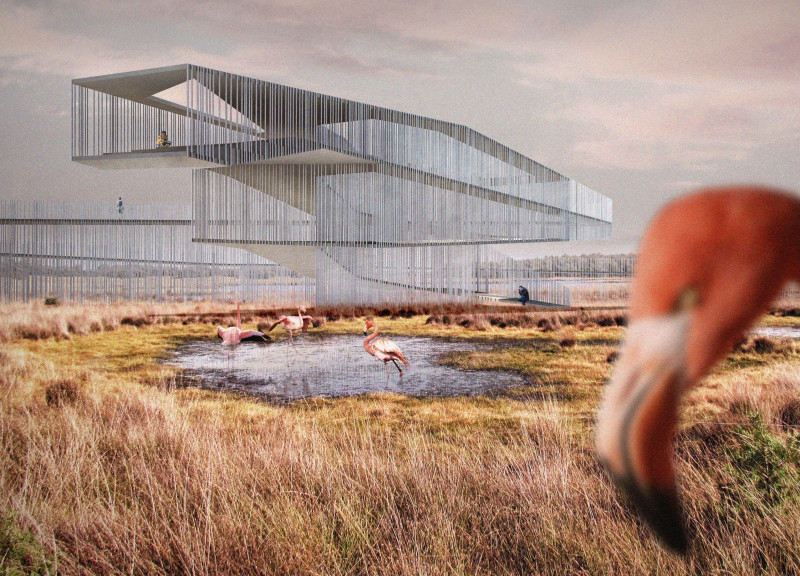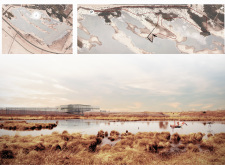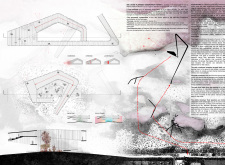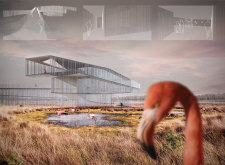5 key facts about this project
The primary function of the observation tower is to provide visitors with an immersive experience of the surrounding environment while promoting conservation awareness. The design is focused on creating unobtrusive vantage points, allowing observers to appreciate the wildlife without disturbing their natural habitat. Its elevated viewing platforms are strategically positioned to offer panoramic views of the wetlands, encouraging visitors to engage with the natural scenery and observe the delicate balance of the ecosystem.
Visually, the tower takes on an organic form that mirrors the natural landscape of the Wathba Wetlands. The facade features seamless glass elements that enhance transparency, allowing ample natural light into the space while providing uninterrupted views of the landscape. The smooth transitions between solid and void reflect the architectural intent to blend the built environment with the wild setting, creating a design that feels both contemporary and attuned to its surroundings.
The structural framework utilizes steel for its strength and durability, ensuring the tower can withstand environmental challenges while maintaining a lightness that is visually appealing. Concrete is employed in foundational elements, providing stability that is critical for a structure situated in a sensitive ecological area. Warm wood finishes complement the industrial materials, offering a tactile experience that connects visitors to the natural environment, embodying a design philosophy that prioritizes sustainability and harmony with nature.
Unique design approaches are evident throughout the project. The layout promotes a circular flow, guiding visitors through various spaces that include educational exhibits and observation areas. This thoughtful spatial organization encourages interaction among visitors and instills a sense of community engagement with the natural world. Each level of the tower is intentionally designed to reveal new perspectives, encouraging exploration and a deeper connection with the setting.
Furthermore, the project embodies a commitment to environmentally responsible practices. Sustainable design principles are infused into the architecture, potentially incorporating features such as rainwater harvesting and solar energy solutions. These elements not only support the operational efficiency of the tower but also emphasize the importance of ecological conservation in architectural design.
The Abu Dhabi Flamingo Observation Tower serves as a significant educational resource, offering programmed activities that raise awareness about the wetlands and the importance of protecting such unique ecosystems. By fostering a space where nature and architecture coexist, the project underscores the role of design in enhancing our understanding of environmental stewardship.
To explore the architectural plans, sections, and design ideas further, readers are encouraged to delve into the detailed presentation of this project. An examination of these elements will provide deeper insights into how this observation tower successfully embodies the intersection of architecture, ecology, and community engagement.


























